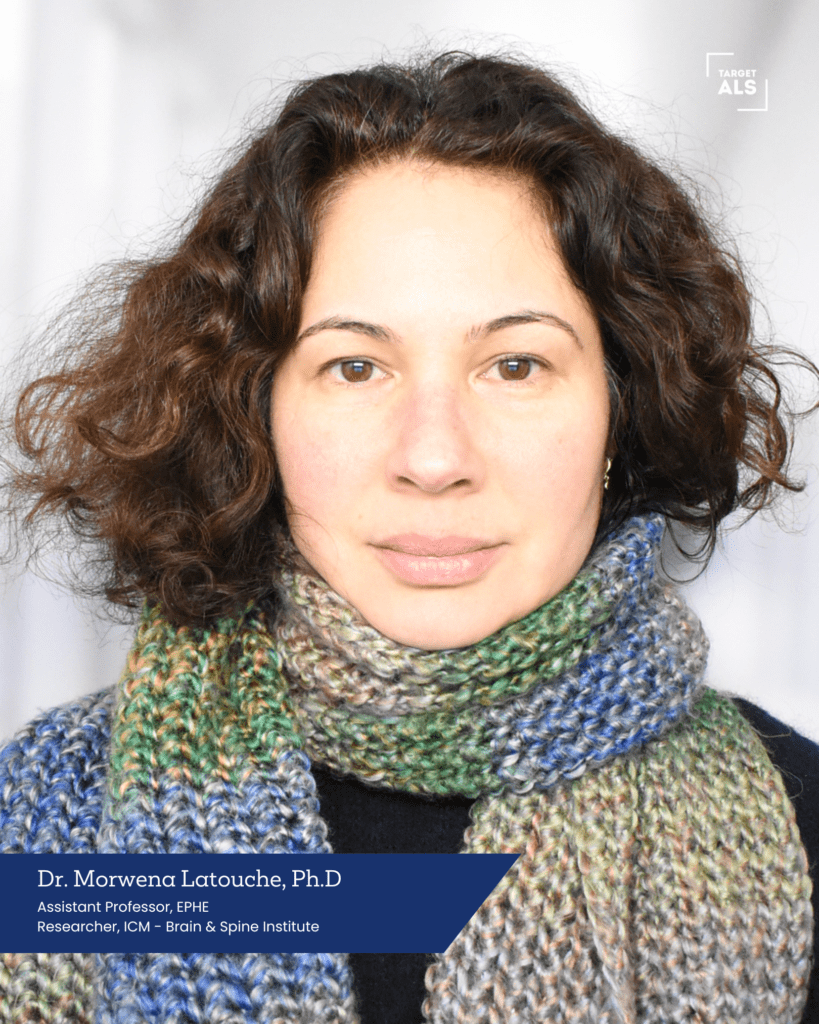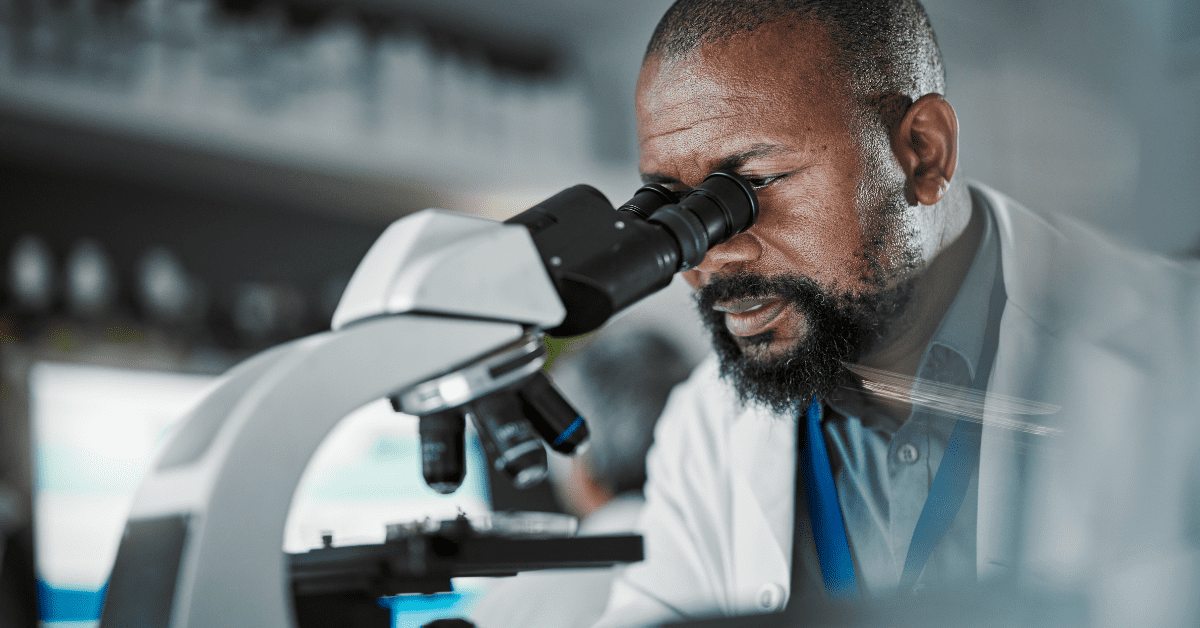Dr. Morwena Latouche is a Target ALS Basic Biology Constortia Grant recipient (2024) and a researcher at the Paris Brain Institute. With decades of experience behind her, she has a primary goal: to tackle TDP-43-related toxicity
A Passion for Neuroscience and a Mission for Change

Dr. Morwena Latouche’s path into neuroscience wasn’t a single defining moment but rather a journey of curiosity and discovery. Initially, she aspired to be a scientific journalist, then a geneticist, and finally, a researcher focused on brain diseases. Her work today bridges the gap between ALS (Amyotrophic Lateral Sclerosis) and FTD (Frontotemporal Dementia), two devastating neurodegenerative diseases linked by a common protein: TDP-43.
As part of the Target ALS 2024 Basic Biology Consortia, Dr. Latouche’s current project, SISMIC-TDP-43, takes an innovative approach to tackling ALS pathology. Rather than traditional drug screening, her and her collaborators are leveraging structure-based molecular design to create small molecules that bind to and potentially modulate TDP-43 aggregation—a hallmark of ALS. These molecules could serve as both therapeutic agents and biomarkers, revolutionizing how we diagnose and treat the disease.
The Challenges of TDP-43 Research and the Power of Collaboration
One of the biggest challenges in studying TDP-43 is its complexity. While scientists know that TDP-43 aggregation is central to ALS, they are still uncovering how many different aggregate species exist and how they vary between patients. The lack of high-resolution structural data further complicates the work, making it difficult to design targeted therapies. Fortunately, this is now evolving quickly, with key structural biology publications over the last five years making it a great time to develop computer-assisted in silico strategies.
Yet, Dr. Latouche sees collaboration as the key to overcoming these hurdles. Working alongside chemists and computational biologists, her and collaborators are integrating cutting-edge computer-assisted molecular design with experimental validation. This interdisciplinary effort, she believes, accelerates research in ways that individual labs simply can’t achieve alone.
A Woman in Science: Overcoming Barriers and Paving the Way
Beyond the science, Dr. Latouche has faced her own challenges as a woman in STEM. During her PhD, she encountered gender biases that she had never considered before. “I had never thought about being a woman as part of the equation until I realized others did,” she recalls. “It came as a shock.”
Despite these challenges, her approach has always been one of resilience. “It was never an ‘if’—just a question of ‘how’ to navigate these obstacles.” She urges young women in science to adopt the same mindset: be aware of gender biases and don’t let gender bias hold you back from pursuing your passion.
For Dr. Latouche, representation matters because the gender gap in leadership roles within science remains stark. “More women enter biology than men, yet far fewer end up leading labs,” she points out. This discrepancy isn’t due to lack of talent or ambition but systemic barriers that still need to be addressed.
One of the most pervasive challenges? How women’s voices are heard. “Too often, a woman will say something in a meeting, and it goes unnoticed. Then, ten minutes later, a man says the same thing, and suddenly it’s a brilliant idea.” She believes it’s not about changing how women present their ideas but about changing how people listen.
A Woman in Science: Overcoming Barriers and Paving the Way
Beyond the science, Dr. Latouche has faced her own challenges as a woman in STEM. During her PhD, she encountered gender biases that she had never considered before. “I had never thought about being a woman as part of the equation until I realized others did,” she recalls. “It came as a shock.”
Despite these challenges, her approach has always been one of resilience. “It was never an ‘if’—just a question of ‘how’ to navigate these obstacles.” She urges young women in science to adopt the same mindset: be aware of gender biases and don’t let gender bias hold you back from pursuing your passion.
For Dr. Latouche, representation matters because the gender gap in leadership roles within science remains stark. “More women enter biology than men, yet far fewer end up leading labs,” she points out. This discrepancy isn’t due to lack of talent or ambition but systemic barriers that still need to be addressed.
One of the most pervasive challenges? How women’s voices are heard. “Too often, a woman will say something in a meeting, and it goes unnoticed. Then, ten minutes later, a man says the same thing, and suddenly it’s a brilliant idea.” She believes it’s not about changing how women present their ideas but about changing how people listen.
The Future: Driving Change in Science and Representation
As Dr. Latouche continues her groundbreaking research, she remains hopeful—not just about the potential for new ALS therapies but for the broader shift in STEM. By highlighting women like her, the scientific community can challenge outdated norms and ensure that future generations of women enter the field with confidence and equal opportunities. As a project leader of the Target ALS-funded consortium, she’s showing women the best way how – by example.
Her message to aspiring women in science? “Go for it. And if something has to stop you, don’t ever let it be the fact that you’re a woman. That’s nonsense.”




